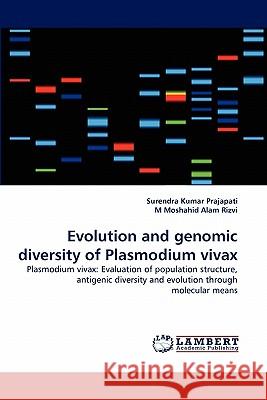Evolution and Genomic Diversity of Plasmodium Vivax » książka
Evolution and Genomic Diversity of Plasmodium Vivax
ISBN-13: 9783844303186 / Angielski / Miękka / 2011 / 212 str.
Shorttitle: Geographical speciation occurs among geographically separated populations and is a common mechanism of speciation in a wide range of organisms. The use of modern genetic techniques has substantially improved our understanding of the identification and detection of the speciation process. Plasmodium vivax isolates inhabiting the Old World and New World regions so far, were considered to be as two different subspecies or separate species because of the variant transmission phenotypes and differences in nuclear and plastid genetic markers. We explored a panel of novel and known genetic markers to trace the pattern of genetic diversity and evolutionary history of P. vivax in the Indian subcontinent to determine the genetic identity between Old World and New World subtypes. Our genetic markers analysis consistently showed a high degree of genetic identity between the supposedly Old and New World isolates of P. vivax and strongly supports our view of a single species.
Shorttitle: Geographical speciation occurs among geographically separated populations and is a common mechanism of speciation in a wide range of organisms. The use of modern genetic techniques has substantially improved our understanding of the identification and detection of the speciation process. Plasmodium vivax isolates inhabiting the Old World and New World regions so far, were considered to be as two different subspecies or separate species because of the variant transmission phenotypes and differences in nuclear and plastid genetic markers. We explored a panel of novel and known genetic markers to trace the pattern of genetic diversity and evolutionary history of P. vivax in the Indian subcontinent to determine the genetic identity between Old World and New World subtypes. Our genetic markers analysis consistently showed a high degree of genetic identity between the supposedly Old and New World isolates of P. vivax and strongly supports our view of a single species.











